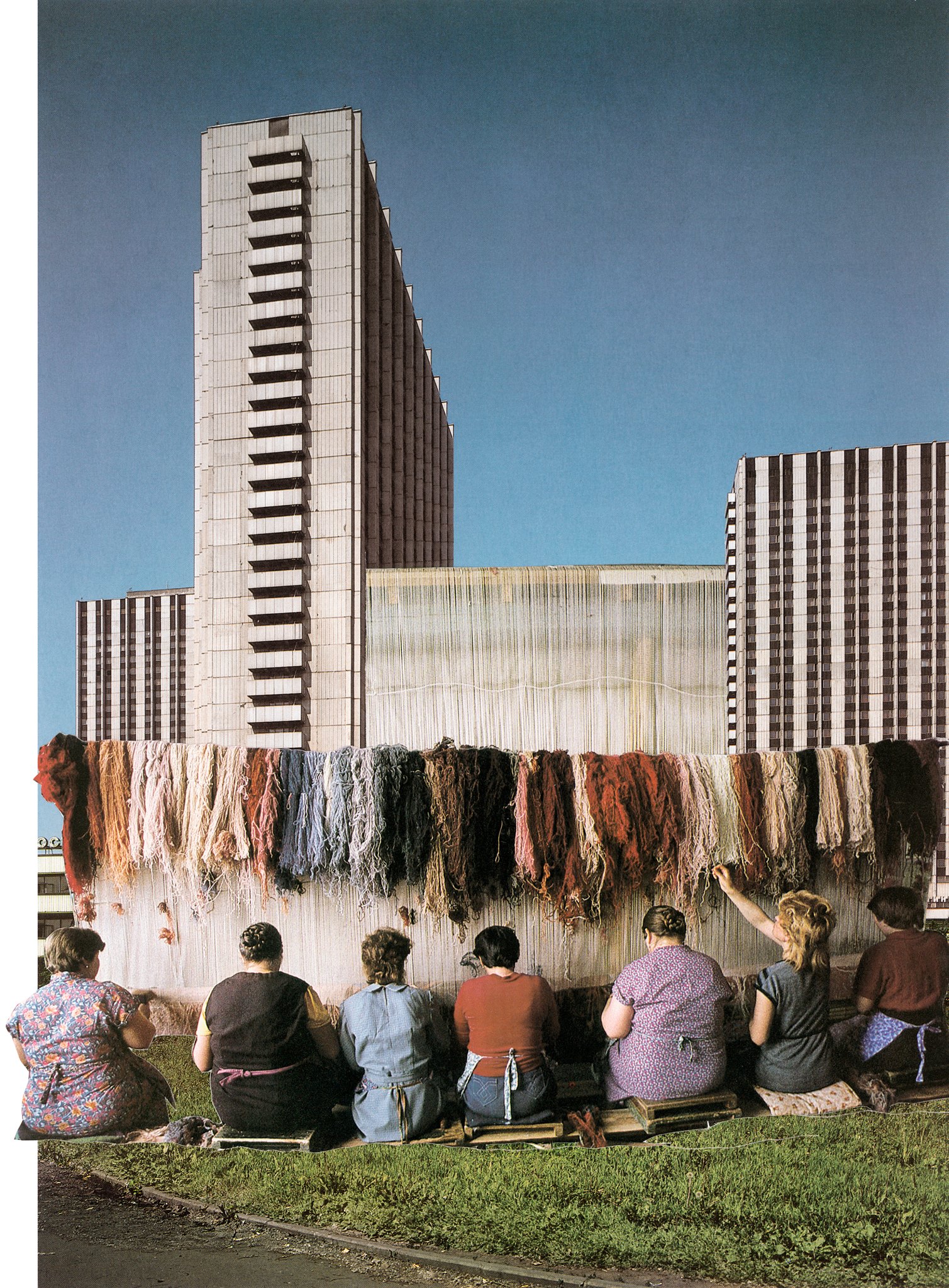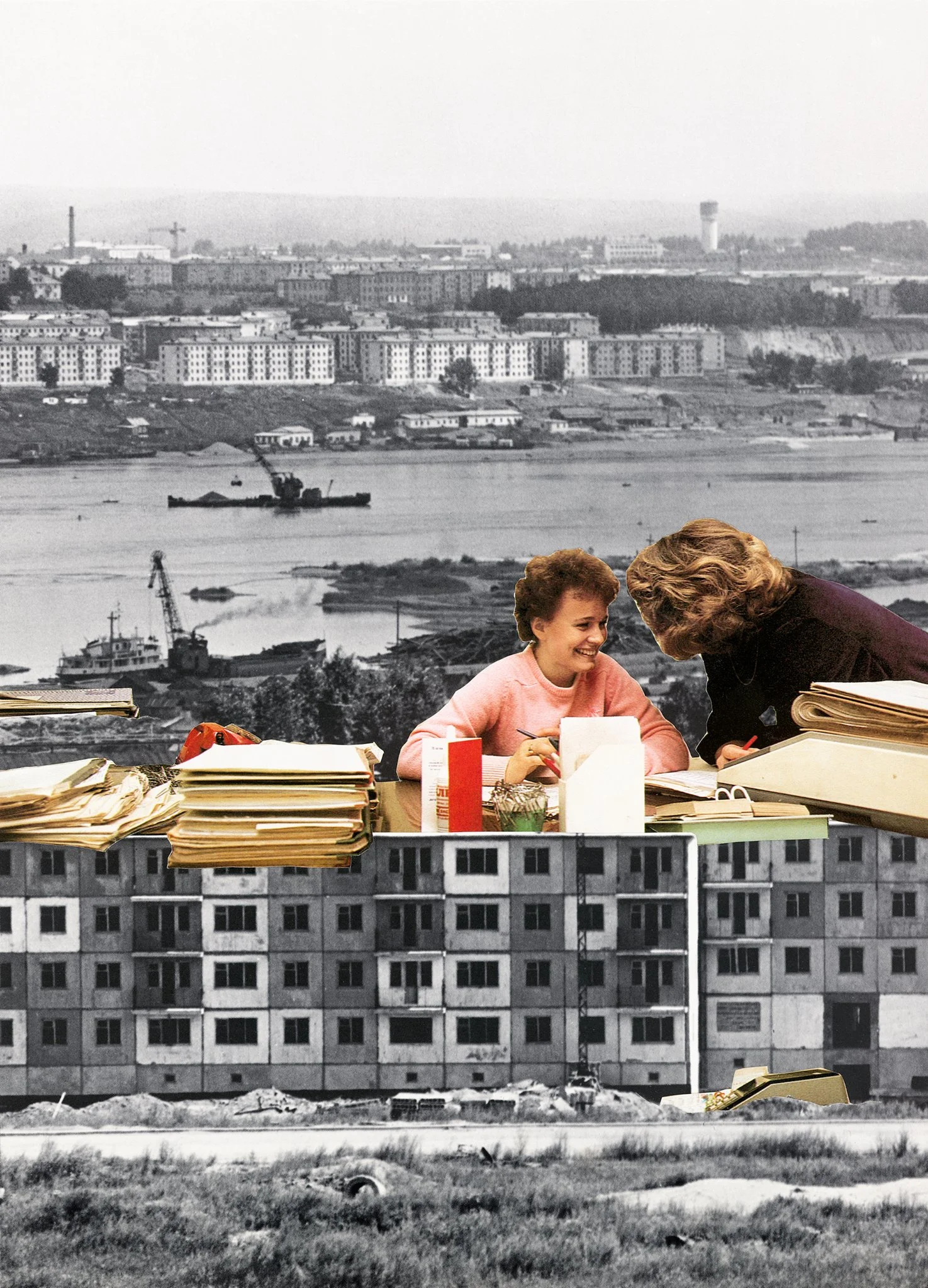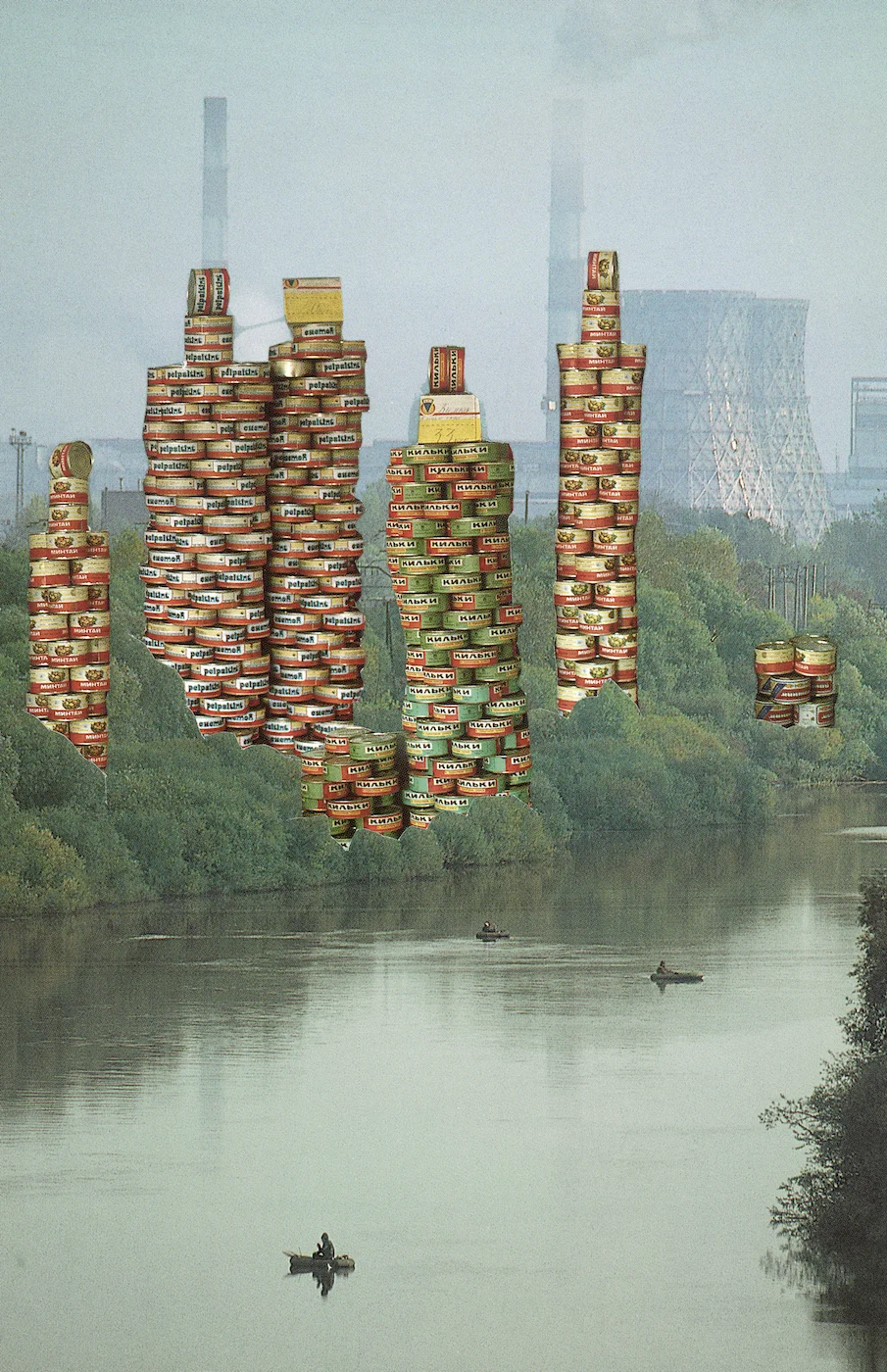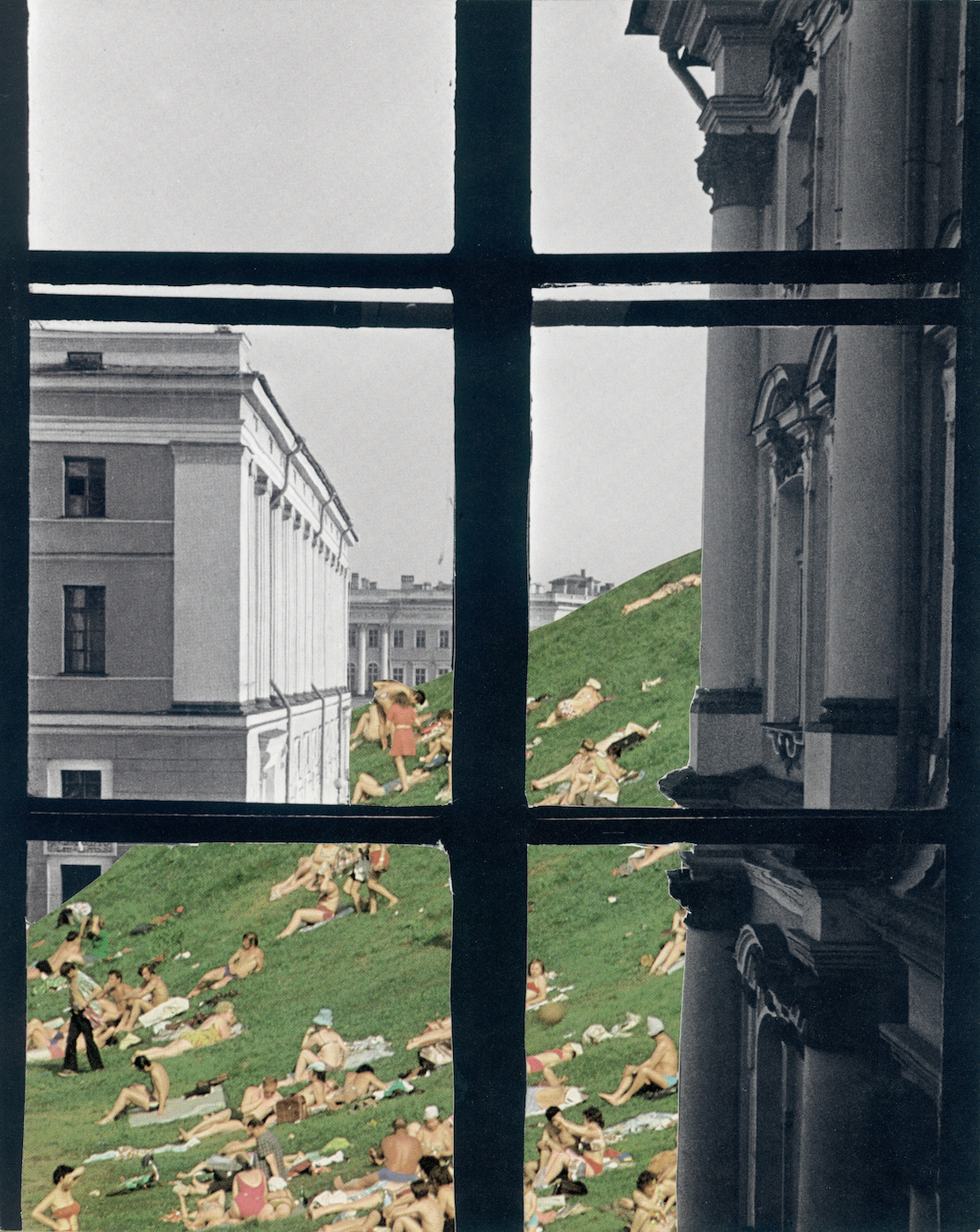Tamara Stoffers: Working Together
Text and Collages by Tamara Stoffers
Tamara Stoffers is a Dutch artist specialising in collage and painting. She studied at the Academie Minerva in Groningen and has been exhibited internationally.
BOTB What prompted you to work with collage?
TS I started making collages in the second year of art school, six years ago, prior to that I had only drawn and painted. Collage was an interesting challenge since I was used to starting from a blank sheet. Making a composition limited by the images you have at your disposal is quite a reverse process. I really enjoyed it and saw it as a kind of puzzle, trying to find a logic or perspective that would make two unrelated images work as one.
Being a collector and finding great joy in immersing myself in images and atmospheres relating to my obsessions, they also quickly become the subject in the images I make. I was captivated by images from the USSR and had already started to let this interest become a major influence in furnishing my home as well as studying the language and history, and let it gradually take over my artistic decisions as well. It became the subject of my collages.
My work is purely analogue, because I like working with the limitations of the source material, like size and limited amounts of images. The physicality of cutting the paper and flipping through the books also makes it pleasant. The books I use are exclusively on the topic of the USSR and printed between 1963 and 1985.
BOTB Collage often derives much of its power from the shock of what’s juxtaposed within the new image; a collision of elements where if there’s a resonance or connection between the elements it’s a strange and uncanny one. But in your work the originals seem carefully combined to create something more harmonious, the fragments seem to create a new ‘whole’ and I find them somehow optimistic and humane.
Making a collage could be said to be a collaboration between the creators of the original images and the artist manipulating them - in a way that painting or photography is not perhaps. Given the origin of the images, which often depict collaborative work, it feels like there’s a resonance between your process and the work(ers) depicted in the images.
I wondered to what extent the source material and your own aims combined or conflicted?
TS It is important to me that the collages do bring about estrangement, yet they do have to stay true to the atmosphere of the original images when they existed individually. Most books at the time were published through ministries, who carefully checked whether the photographs would convey the right message; mainly one of optimism and the glorification of labour. The books had a certain purpose and were rather utopian. Their aim, as with all spheres of art, was to inspire the society to contribute to the 'bright future' as imagined by the state.
My collages show a disfunctional world built on good intentions, which perhaps is closer to reality than the original images. However, I do respect the message of the initial photographs. Coming from a country with a strong focus on individualism, the Netherlands, the attention to the collective and celebration of the mundane seems refreshing and makes me curious. Making these collages feels like a deep-dive into this world and getting to understand it better.
I don't feel a conflict with the aims of the source material. I think both the photographers and I look at the subject with a researching yet sympathetic curiosity focused on the humane aspects of an idealistic society that never quite got what they were striving for.
Notes
Published 8th August 2019
All images © Tamara Stoffers
For more collages visit tamarastoffers.com











